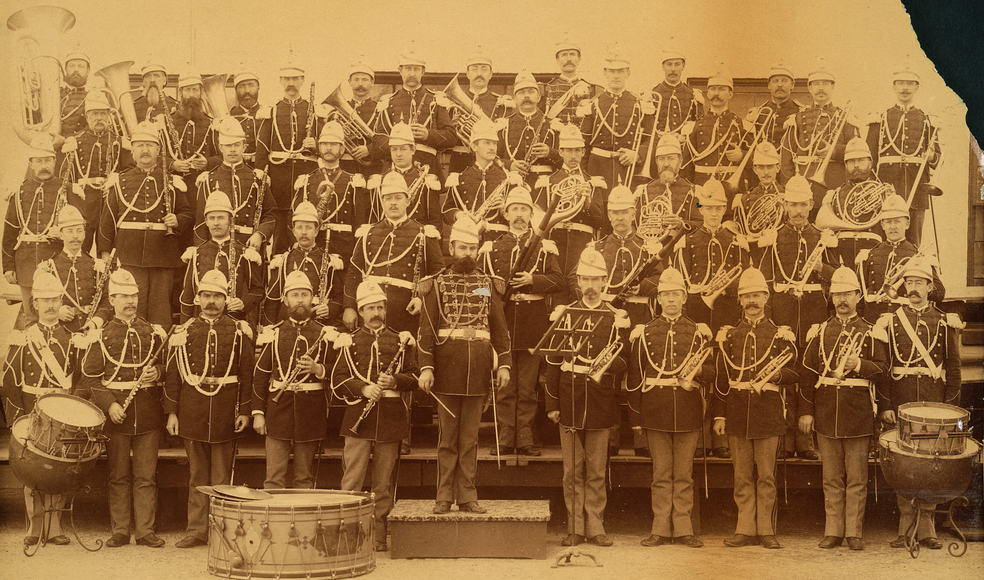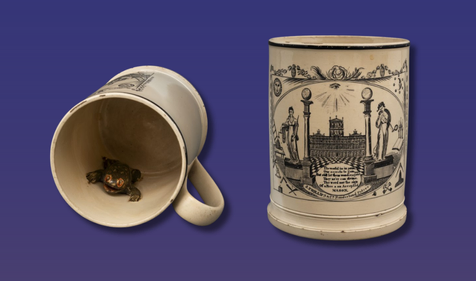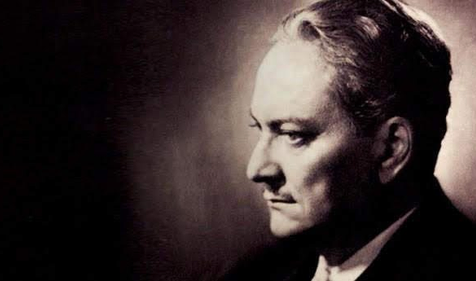Explore the Masonic journey and story of Brother John Philip Sousa, a renowned American composer and dedicated Freemason for 51 years.
“I have always believed that 98% of a student's progress is due to his own efforts, and 2% to his teacher." ~ John Philip Sousa
Freemasonry, one of the world’s oldest and most esteemed fraternal organizations, has seen many respected members, including Brother John Philip Sousa, a distinguished composer and conductor who embodied the fraternity’s values and was ardently committed to its success.
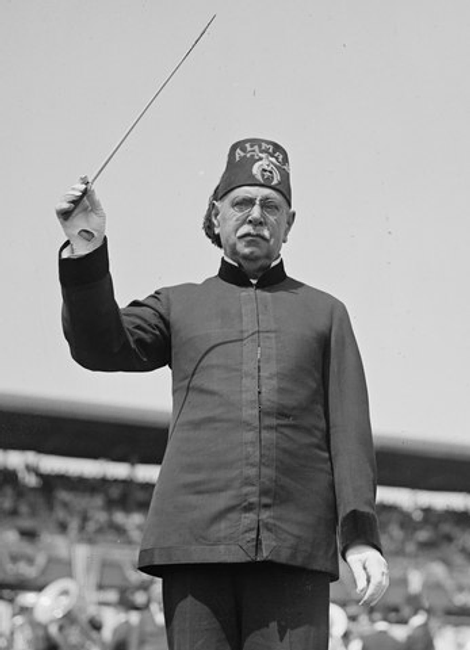
Brother Sousa is best known for his tenure as the leader of the United States Marine Band, where he earned the title "The March King" for his iconic marches, such as “The Stars and Stripes Forever.” Brother Sousa was an active and dedicated Freemason for over five decades and left behind significant contributions to the world of music, the United States military, and Freemasonry.
Early Life and Musical Education
Brother Sousa was born on November 6, 1854, in Washington, D.C., the third of 10 children, to João António de Sousa and Maria Elisabeth Trinkhaus. His musical education began when he was a young boy – he was taught at an evening conservatory run by the ill-tempered John Esputa Sr. Soon, the instructor’s son took over his lessons and taught Brother Sousa to play the violin, piano, flute, several brass instruments, and to sing.
The youngster was gifted, advancing quickly, and endowed with perfect pitch. He soon composed his first piece, "An Album Leaf," and when he was 13 began studying music under George Felix Benkert. That same year, his father, who played trombone in the Marine Band, drafted Brother Sousa to the United States Marine Corps as an apprentice. His enlistment was under a minority contract, so he remained in the Marines until his 21st birthday.
Military Service
Brother Sousa completed his apprenticeship in 1875 and began performing on the violin. He joined a theatrical pit orchestra where he first tried his hand as a conductor. In 1880, Brother Sousa returned to the Marine Band, now to serve as its head, leading the band through the tenure of five presidents, from Rutherford B. Hayes to Benjamin Harrison, and played at the inaugural balls of James A. Garfield in 1881 and Benjamin Harrison in 1889.
During this period, Brother Sousa turned the Marine Band into the United States’ premier military band. He was innovative and demanded precision from his players, replacing much of the music in the band’s library with symphonic transcriptions and altering the instrumentation as he deemed fit. Under his charge, The Columbia Phonograph Company produced 60 recordings of the Marine Band, helping it achieve national recognition.
Brother Sousa also began gaining attention and respect, not just for the quality of the band’s performances, but for his own compositions, starting with his march "The Gladiator" in 1886. From that time on, he received increasing attention and respect as a composer. He wrote "Semper Fidelis," dedicated to "the officers and men of the Marine Corps," which has become known as the official march of the Marine Corps.
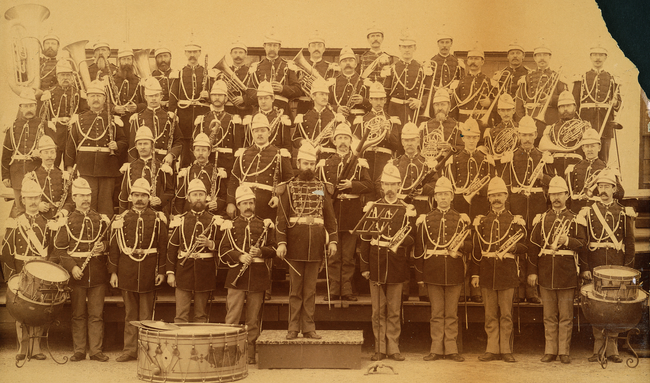
In 1889, Brother Sousa composed the "Washington Post," which became the most popular tune in America and Europe. For this accomplishment, he was dubbed the "March King". His acclaim was well earned, as Brother Sousa had demonstrated an unflappable work ethic and commitment to quality in his work. American music historian Paul Edmund Bierley wrote of Brother Sousa:
Sousa was a man of considerable self-discipline and extraordinary talent. He excelled in everything he undertook, yet he was unassuming, approachable, tolerant, and in possession of an almost saintly disposition. To all who knew him, he was a man of incredibly high moral standards. From his childhood, he was determined, industrious, and in command of such an unbounded optimism that nothing seemed impossible to him. Foremost in his mind was how best to please his audiences.
In July 1892, Brother Sousa requested a discharge from the Marine Corps to pursue a civilian career as a band leader, conducting a farewell concert at the White House on July 30, 1892, before his discharge the following day.
Civilian Life
Ever the perfectionist, Brother Sousa had grown dissatisfied with the hélicons used by the United States Marine Band, and in 1893 he sought an alternative. He approached James Welsh Pepper to create a new instrument that would project sound upward and over the band, akin to a concert tuba. Initially developed as a concert instrument rather than for marching, the sousaphone was intended for Brother Sousa's professional band. Yet, the sousaphone's practicality for marching became evident, and by 1908, it was adopted by the United States Marine Band, cementing its place in military and marching band music.
In 1892, Brother Sousa organized The Sousa Band, which toured extensively from 1892 to 1931, performing a staggering 15,623 concerts around the world, including notable performances at the World Exposition in Paris and the Royal Albert Hall in London. In Paris, The Sousa Band marched through the streets to the Arc de Triomphe, one of only eight parades the band participated in during its 40 years.
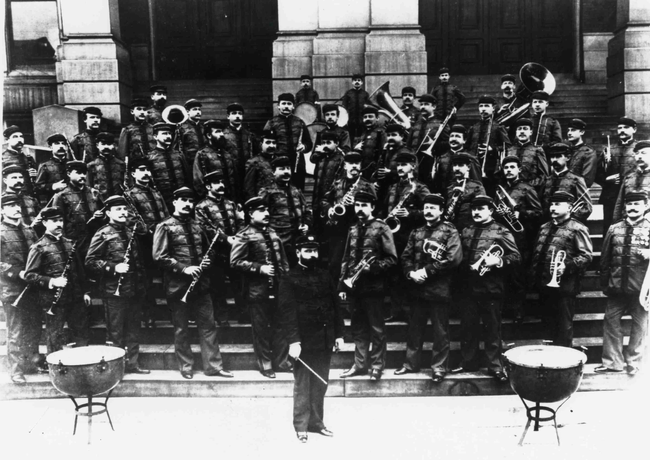
After the United States entered World War I, Brother Sousa was commissioned as a lieutenant in the Naval Reserve on May 31, 1917, now 62 years of age. He led the Navy Band at the Great Lakes Naval Station near Chicago and demonstrated the true heart of a Freemason when he donated the majority of his naval salary to the Sailors' and Marines' Relief Fund.
After the war ended, Brother Sousa returned to conducting his band. He was later promoted to lieutenant commander in the Naval Reserve, and while he never returned to active duty, he often donned his Navy uniform during performances for the rest of his life.
The Mason Behind the Marches
On December 30, 1879, long before The Great War began, John Philip Sousa married Jane Van Middlesworth Bellis and together they had three children: John Philip Jr., Jane Priscilla, and Helen. Two years after he started his family, his Masonic journey began at age 26 when was first initiated into Hiram Lodge No. 10 in Washington, D.C. He was raised on November 10, 1881. Brother Sousa never transferred to a different lodge in the 51 years he remained an active Master Mason.
Like many men, Brother Sousa sought a deeper connection to the Craft that extended beyond the symbolic degrees. On September 16, 1886, he received the Capitular Degrees and was exalted in Eureka Chapter No. 4 (later known as Eureka Naval Chapter). His Masonic journey included receiving the Order of Red Cross, Malta, and Temple on December 3, 1886, followed by being knighted in Columbia Commandery No. 2, Knights Templar, Washington, D.C., on December 10, 1886.
Brother Sousa's Masonic accomplishments continued to grow, culminating in his initiation into the Ancient Arabic Order of the Nobles of the Mystic Shrine (AAONMS) at Almas Temple, Washington, D.C., on April 21, 1922. Recognizing his contributions and dedication, he was soon named the first honorary director of the Almas Temple Band.
Among Brother Sousa's many contributions to Freemasonry were three of his best-known marches: “The Crusader” (1888), “The Thunderer” (1889), and “Nobles of the Mystic Shrine” (1923). The latter was composed at the request of his nephew, A. R. Varela, and dedicated to the Almas Temple and the AAONMS. This march, unique for its initial strain written in the minor mode, was first conducted in June 1923 with a band of around 6,200 members—the largest Sousa had ever led. He proudly wore a red Almas Shrine fez, conducting the march twice before conducting "The Thunderer." Various Shriners accompanied Brother Sousa during his tours, and during the later years of Brother Sousa's band, nearly half of its members were Shriners.
Apart from his illustrious music career, Brother Sousa was also a skilled trapshooter, ranking among the all-time greats and earning a place in the Trapshooting Hall of Fame. He was also an accomplished writer who penned several works of fiction and instructional materials. His 1902 novella, "The Fifth String," tells the story of a virtuoso violinist who makes a deal with the Devil for a magic violin. In 1920, he wrote a 40,000-word story titled "The Transit of Venus." He also authored "A Manual for Trumpet and Drum," which offered advice for playing these instruments.
Death, Honors, and Legacy
Brother Sousa passed to the Celestial Lodge at the age of 77 on March 6, 1932, in his room at the Abraham Lincoln Hotel in Reading, Pennsylvania. True to form, he was conducting right up until the end, leading a rehearsal of "The Stars and Stripes Forever" with the Ringgold Band the day before his death. He is buried in Washington, D.C.'s Congressional Cemetery, where the Marine Band performs "Semper Fidelis" at his grave each November 6. Brother Sousa's house, Wildbank, has been designated as a National Historic Landmark, though it remains a private home and is not open to the public.

With such an accomplished life, it is no surprise Brother Sousa received numerous accolades, including:
- In December 1901, receiving the Royal Victorian Medal from King Edward VII of the United Kingdom for conducting a private birthday concert for Queen Alexandra.
- In 1922, being accepted as an honorary member of Kappa Kappa Psi, the national honorary band fraternity.
- During World War II, the Liberty ship SS John Philip Sousa being named in his honor.
- In 1952, 20th Century Fox honoring him with their Technicolor feature film "Stars and Stripes Forever," in which Clifton Webb portrayed him.
- An act of Congress in 1987 naming "The Stars and Stripes Forever" as the national march of the United States.
- Posthumously being enshrined in the Hall of Fame for Great Americans in 1976.
Even after his death, Brother Sousa continues to be remembered as "The March King" through the John Philip Sousa Foundation, a non-profit that recognizes and provides awards and scholarships for one superior student in a marching band each year for "musicianship, dependability, loyalty, and cooperation."
The March King
Brother Sousa endures as an iconic figure in both the musical world and Freemasonry. Throughout his illustrious career, he led the United States Marine Band to new heights and left an indelible mark on the world of music with his iconic marches and the invention of the sousaphone. He wrote an incredible 130 marches, 15 operettas, and countless works for orchestras, but beyond his musical achievements, Brother Sousa embodied the values of Freemasonry.
In the words of Brother Sousa himself, “I have always believed that 98% of a student's progress is due to his own efforts, and 2% to his teacher.” This philosophy underscores his belief in hard work and personal dedication, values that resonate deeply within Freemasonry and beyond. Brother Sousa's life and accomplishments serve as an enduring testament to the power of commitment, talent, and the pursuit of excellence.
Related Stories
Discover additional Scottish Rite blogs and news on this topic.
-
A Jolly Masonic Mug
History
Read More about A Jolly Masonic Mug
-
The Life and Career of Brother Arnold Palmer
Famous Masons
Read More about The Life and Career of Brother Arnold Palmer
-
Manly P. Hall: Philosopher, Mystic, and Freemason
Famous Masons
Read More about Manly P. Hall: Philosopher, Mystic, and Freemason
